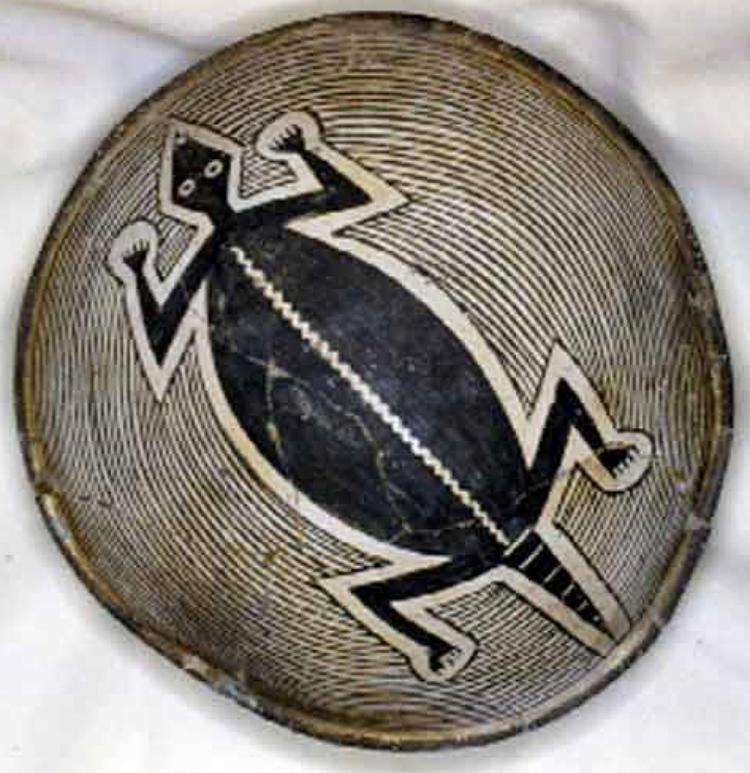The CU Museum is closed until January 8, 2026.
During this time, collection visits will be available by appointment and other special access requests will be considered on a case-by-case basis.
Please email cumuseum@colorado.edu for more information.
Mimbres Bowl
Mimbres bowls are likely the most famous ceramics in Southwest archaeology and are preserved by natural history, anthropology, and art museums around the country. Mimbres refers to the Mimbres Valley of present-day southwestern New Mexico, where Indigenous peoples lived and created these pottery artifacts from 1000 to early 1100 AD.
The bowls are highly regarded for their elaborate and intricate black-on-white iconography, including human and animal figures, and modern archeologists surmise the patterns serve the same purpose of language, to convey social and religious messages. Animals and plants, such as the lizard on this bowl, can be used to understand the natural environment of the central Southwest in the 11th and 12th centuries. The telltale black-on-white pigmentation comes from white slip (a

Bowls in particular, the most common form of Mimbres pottery, were often used for food preparation and storage, and they’re theorized to have a vitally important role in funeral services as well1. The purpose this served is still largely unknown, like much of the Mimbres way of life. Mimbres potters stopped making black-on-white ceramics around 1130 as they simultaneously shifted many other aspects of their lifestyle. Some archeologists theorize the Mimbres Indigenous peoples joined other nearby Pueblo cultures, while others theorize that they moved further south to Mexico, and these explanations need not be mutually exclusive as movement was common throughout the region. Though much of their culture is unknown, their pottery serves as a beautiful testament to early storytelling and art.

